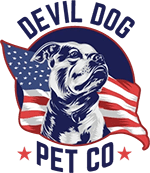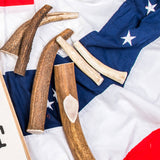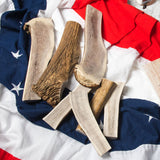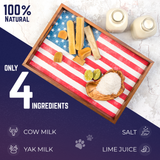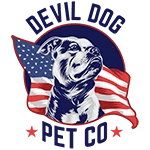Key Takeaways
- Cactus-shaped dog toys provide unique textures and visual appeal that differ from standard plush or rubber toys.
- The spiky design offers multiple grip points and varied surfaces that engage different areas of a dog's mouth.
- These toys serve as excellent seasonal enrichment rotators alongside core digestible chew programs.
- Quality cactus dog toys combine novelty with practical mental stimulation for dogs.
- Choosing the right material and size is essential to ensure cactus dog toys are safe enrichment tools rather than hazards.
Table of Contents
- Cactus Dog Toy Safety: Expert Sizing & Material Guide
- Material Types: Safety Profiles & Durability
- Sizing Rules: Preventing Choking Hazards
- Strategic Role: Toys vs. Digestible Chews
- Tactical Deployment: 4 Proven Play Applications
- Maintenance Protocol & Replacement Triggers
- Life Stage Applications: Puppies to Seniors
- Expert Verdict: Top Cactus Dog Toy Picks by Use Case
- Integration Strategy: Cactus Toys + Premium Chews
- Advanced Applications: Beyond Basic Enrichment
- Long-Term Considerations & Enrichment Evolution
Cactus Dog Toy Safety: Expert Sizing & Material Guide
Cactus-shaped dog toys offer unique texture variety and visual appeal that standard plush or rubber toys can't match. Their spiky design provides multiple grip points and varied surfaces that engage different mouth areas, making them excellent seasonal enrichment rotators alongside your core digestible chew program. Digestible chews like elk antlers are a great complement to these toys, providing sustained chewing satisfaction and dental maintenance.
Unlike traditional toys, a quality cactus dog toy combines novelty factor with practical mental stimulation, but material choice and sizing determine whether they're safe enrichment tools or potential hazards. For more inspiration on unique enrichment options, check out this fire hose dog toy guide.
This guide cuts through marketing fluff to give you the tactical knowledge needed to match cactus toys to your dog's play style, chew intensity, and safety profile.
Best cactus dog toy choice depends on your dog's chewing style: Rubber variants for heavy chewers and unsupervised play, plush versions for interactive fetch sessions, and snuffle types for anxiety management. Always size larger than your dog's muzzle width and supervise plush toys to prevent stuffing ingestion.
Material Types: Safety Profiles & Durability

Rubber Cactus Toys - Built for Power Chewers
Best for: Heavy chewers, water play, unsupervised enrichment sessions
100% non-toxic rubber construction with faux spikes designed for dental scraping without sharp edges. These float in water and resist puncture better than standard plush alternatives. Quality rubber cactus dog toy options maintain structural integrity for 3-6 months with consistent daily chewing, making them cost-effective for aggressive chewers who destroy softer toys within hours.
Plush Cactus Toys - Interactive Play Focus
Best for: Moderate chewers, fetch-focused dogs, supervised play sessions
Soft outer layer with internal squeaker components or rip-reveal textures. These excel during interactive play but require constant supervision due to stuffing ingestion risks if seams tear. Expect 2-6 weeks lifespan with daily supervised sessions, retire immediately when seam separation appears. For more seasonal play ideas, see our holiday dog toys roundup.
Snuffle Cactus Toys - Anxiety Management
Best for: Separation anxiety, crate training, nose-work engagement
Layered fabric spikes designed to hide treats or kibble, engaging foraging instincts rather than jaw strength. These provide indefinite use since destruction isn't the goal, dogs work to extract hidden rewards, reducing cortisol during stressful periods.
Sizing Rules: Preventing Choking Hazards
Size selection follows the same principle as digestible chews: the toy must be larger than your dog's muzzle width to prevent whole-toy swallowing. Small breeds under 15 pounds need minimum 4-5 inch cactus dog toy options, while medium breeds (15-50 pounds) require 6-8 inch variants. Large and XL breeds over 50 pounds should stick to 8-12 inch monster-sized options, especially for unsupervised play.
Red flags include loose spikes, peeling paint, or glued-on components. Any cactus toy showing these signs gets retired immediately, no exceptions.
| Dog Size | Minimum Toy Size | Material Recommendation | Supervision Required |
|---|---|---|---|
| Under 15 lbs | 4-5 inches | Plush or Snuffle | Always |
| 15-50 lbs | 6-8 inches | Rubber or Plush | Plush only |
| 50+ lbs | 8-12 inches | Rubber preferred | Optional for rubber |
Strategic Role: Toys vs. Digestible Chews
Cactus toys handle mental enrichment and play engagement, while digestible chews like antlers, yak sticks, and bully sticks provide sustained chewing satisfaction and dental maintenance. A quality cactus dog toy delivers zero calories but 20-30 minutes of focused brain work, perfect for work-from-home gaps or pre-departure anxiety management.
Digestible chews carry 80-300 calories per session but offer extended jaw exercise and natural teeth cleaning. Smart rotation uses cactus toys for quick mental stimulation and premium chews for serious gnawing sessions.
Tactical Deployment: 4 Proven Play Applications

Snuffle Cactus for Departure Anxiety
Best for: Crate training, work-from-home transitions, thunderstorm distraction
Stuff small kibble or freeze-dried treats into fabric spikes 15 minutes before departure or crating. This creates 20-30 minutes of focused nose-work that reduces cortisol levels and masks departure sounds. The cactus dog toy snuffle variant works because dogs must use problem-solving skills rather than destructive chewing to access rewards.
Rotate snuffle toys weekly to maintain novelty, dogs habituate to familiar enrichment tools, reducing their anxiety-management effectiveness.
Rubber Cactus for Conditioning & Recall
Best for: Post-walk cooldown, swimming practice, grip strength building
Floating rubber variants excel in shallow water or yard fetch sessions. The multiple grip points help dogs practice mouth positioning while the buoyancy adds retrieval challenge. Limit sessions to 10-15 minutes to prevent overexertion, then reward successful retrieves with a 2-minute premium chew.
Plush Cactus for Two-Handler Games
Best for: Building toy drive, controlled tugging, family engagement
One handler tosses while the second provides gentle resistance during retrieval. This builds confidence in hesitant dogs while teaching impulse control in overexcited ones. Keep sessions to 5-10 minutes maximum and supervise continuously, retire any cactus dog toy showing seam stress immediately. For more interactive play options, you might also enjoy this ring dog toy article.
Maintenance Protocol & Replacement Triggers
Plush variants require cold-water hand washing and air-drying only, machine cycles degrade stitching and glue bonds. Rubber toys need warm water rinses with mild dish soap, while snuffle types get vacuumed for debris and spot-cleaned with damp cloths. Store all variants in cool, dry locations away from direct UV exposure.
Replace immediately when plush toys show seam separation or squeaker exposure, rubber toys develop cracks or soft patches, or any cactus dog toy becomes small enough to fit entirely in your dog's mouth. Visible mold, mildew, or chemical odors also trigger immediate retirement.
Safety Standard: If you question whether a cactus toy is still safe, err on retirement. The cost of replacement never exceeds the cost of emergency vet visits for intestinal blockages.
Life Stage Applications: Puppies to Seniors
Puppies: Building Healthy Play Habits
Start with oversized rubber variants only, plush toys teach destructive behaviors during the critical 8-week to 6-month development window. Pair with 10-minute supervised sessions to prevent overstimulation. Avoid snuffle types until impulse control develops around 4-5 months.
Power Chewers: Durability Focus
Rubber cactus dog toy options exclusively, rotated between 2-3 variants to prevent fixation. Deploy during high-anxiety periods like departure preparation or storm shelter. Monitor for piece ingestion, if chunks disappear, downsize or increase supervision frequency.
Senior Dogs: Gentle Stimulation
Softer plush or snuffle variants protect worn teeth and sensitive gums while maintaining mental engagement. Snuffle types especially benefit low-energy, high-anxiety seniors managing pain or cognitive decline. Limit enrichment windows to 10-15 minutes and avoid aggressive tugging games.
Cactus toys complement rather than replace your digestible chew program. They excel as boredom busters and anxiety managers while premium antlers, yak chews, and bully sticks handle sustained jaw exercise and dental maintenance. Choose rubber for power chewers, plush for interactive sessions, and snuffle for brain-work. Rotate monthly, inspect weekly, and retire when safety signals appear, your dog's enrichment plan stays both engaging and secure.
Expert Verdict: Top Cactus Dog Toy Picks by Use Case

After evaluating material science, safety profiles, and enrichment effectiveness, these cactus dog toy categories deliver the strongest value for Extreme Dog Leadership practitioners:
KONG Cactus - Durability Champion
Best for: Heavy chewers, unsupervised enrichment, water play
KONG's natural rubber compound and reinforced spike design withstand 6+ months of aggressive chewing. The hollow core accepts treat stuffing while maintaining structural integrity. Floats reliably and cleans easily with standard dish soap.
- Puncture-resistant natural rubber construction
- Dishwasher-safe cleaning
- Multiple size options from small to XXL
- Higher upfront cost than plush alternatives
- Limited squeaker appeal for sound-motivated dogs
ZippyPaws Cactus - Interactive Play Favorite
Best for: Moderate chewers, fetch training, family engagement
Reinforced seams and crinkle-sound interior maintain engagement without excessive squeaking. The 8-inch size fits most medium breeds while preventing whole-mouth swallowing. Fabric spikes provide varied texture without sharp edges.
SnuffleMat Cactus - Anxiety Management Specialist
Best for: Separation anxiety, crate training, senior enrichment
Fleece spike construction hides kibble effectively while encouraging natural foraging behaviors. The flat base prevents tipping during nose-work sessions. Machine-washable design simplifies maintenance between rotations. For more enrichment ideas for specific breeds, see our rottweiler dog toys guide.
Advanced Applications: Beyond Basic Enrichment
Experienced handlers leverage cactus dog toy variants for specific behavioral modifications and training progressions.
Impulse Control Building: Place a treat-stuffed snuffle cactus within sight but require a 30-second "wait" command before release. Gradually extend duration to build frustration tolerance and command reliability.
Resource Guarding Prevention: Introduce multiple identical cactus toys during group play sessions. Dogs learn abundance mentality rather than scarcity-driven possession behaviors. This technique works especially well with rescue dogs showing food anxiety.
Confidence Building for Timid Dogs: Start with oversized plush cactus toys that cannot trigger prey drive but encourage gentle mouthing. Success with "safe" textures transfers to appropriate chew confidence with premium options like split antlers or yak chews.
Weather-Day Protocols: Indoor cactus toy rotations prevent cabin fever during extended weather confinement. Combine snuffle work with rubber toss games to replicate outdoor exercise benefits within space constraints. For additional enrichment strategies, consider reading this giraffe dog toy guide.
Long-Term Considerations & Enrichment Evolution

Your dog's cactus dog toy preferences will shift with age, health changes, and training progression. Plan rotation budgets around these predictable transitions.
Puppy to Adult Transition (6-18 months): Gradually introduce harder rubber variants as adult teeth establish. Monitor for increased destruction drive and adjust supervision accordingly. Adult to Senior Transition (7+ years): Shift toward softer textures and shorter engagement windows as joint health and energy levels change.
Seasonal Rotation Strategy: Summer emphasizes floating rubber variants for water play; winter focuses on indoor snuffle work and plush interaction. This prevents toy habituation while matching environmental opportunities.
Budget Planning: Quality cactus toys cost $8-25 each but last 2-6 months with proper rotation. Budget $50-75 annually for a complete three-variant rotation system. This investment complements rather than competes with your premium chew program, antlers, yak chews, and bully sticks remain the foundation of sustained jaw exercise and enrichment.
Frequently Asked Questions
What materials are best for cactus dog toys to ensure safety and durability for different chewing styles?
Rubber cactus toys suit heavy chewers with durable, non-toxic construction and faux spikes that resist punctures. Plush variants work well for interactive play but require supervision to prevent stuffing ingestion. Snuffle cactus toys offer gentle mental stimulation, ideal for anxiety management and low-intensity chewers.
How do cactus dog toys complement digestible chew programs like elk antlers in a dog's enrichment routine?
Cactus dog toys provide varied textures and grip points for short-term mental and physical engagement, while digestible chews like elk antlers offer sustained chewing satisfaction and dental benefits. Together, they create a balanced enrichment strategy that addresses both play and natural chewing instincts.
What sizing guidelines should I follow to prevent choking hazards when choosing a cactus dog toy?
Always select a cactus toy larger than your dog’s muzzle width to prevent swallowing or choking. Proper sizing ensures the toy can’t fit entirely in your dog’s mouth, reducing the risk of accidental ingestion or blockage.
How can different types of cactus dog toys, such as rubber, plush, and snuffle variants, be used to address specific dog needs like heavy chewing, interactive play, or anxiety management?
Rubber cactus toys are built tough for heavy chewers and unsupervised use. Plush cactus toys excel in interactive fetch or tug sessions but need supervision to avoid stuffing ingestion. Snuffle cactus toys provide calming mental stimulation, helping dogs with anxiety or low-energy needs.
